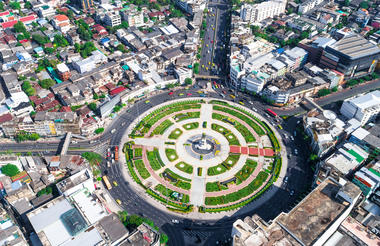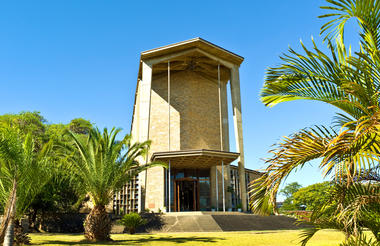Situated in Central Namibia, the cosmopolitan city of Windhoek serves as the capital of the country. It is home to an international airport and a plethora of restaurants, shops, entertainment venues and accommodation options. The city is clean, safe and well-organised, with a colonial legacy that is reflected in its many German eateries and shops, and the widespread use of the German language. Windhoek has an interesting mix of historical architecture and modern buildings, many of which are worth a look, including the Alte Feste an old fort, the 1896 Christuskirche Christ Church, and the more contemporary Supreme Court.
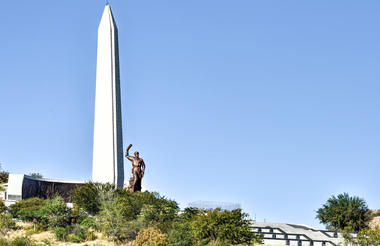
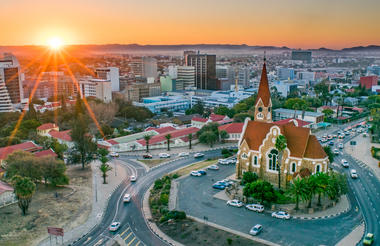
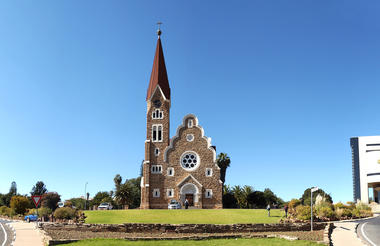
Spreading across Botswana, South Africa and Namibia, the Kalahari meaning 'the great thirst' is an exceptionally beautiful living desert. The landscape is characterised by a large semi-arid sandy savannah draped over a gently rolling inland sea of sand covering most of Botswana and large parts of Namibia and South Africa. It is also the last bastion of the indigenous San people with the modern world having enveloped all the other areas they once roamed. The Namibian portion is made up of red sands covered in thin, wispy, mostly golden grass and dotted with acacia trees and wide-ranging wildlife including gemsbok, impala, jackals and cheetah.
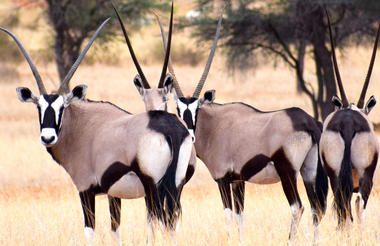
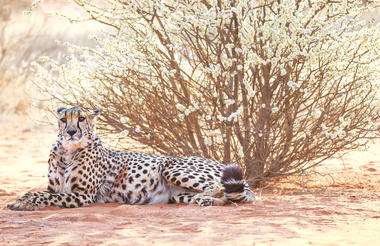

Combining the former Kalahari Gemsbok National Park of South Africa and the Gemsbok National Park in Botswana, the enthralling Kgalagadi Transfrontier Park is a wonderland of bright orange dunes, spectacular wildlife and fascinating flora. This hauntingly beautiful desert land is part of Africa’s first transfrontier park, ensuring that conservation is the top priority for this vast ecosystem and its inhabitants - it also supports and protects the indigenous people here, the ‡Khomani San and Mier communities. Visitors can look forward to spotting lions, leopards, hyenas, cheetahs, blue wildebeest, springbok, eland, and more than 200 bird species, including migrating flamingos and pelicans, and numerous raptors. Some of the activities on offer include game drives, 4x4 excursions, hiking, swimming, eco trails, star-spotting and nature photography.



As previously described



As previously described
Situated in the Kalahari Desert region of Botswana and South Africa, the Kgalagadi Transfrontier Park is an expansive wildlife preserve. One of the world’s last unspoilt ecosystems, the arid landscape is characterized by vast grasslands dotted with thorn trees, shifting red dunes and dry riverbeds. Visitors can look forward to viewing an abundance of wildlife including gemsbok, black-maned Kalahari lions, blue wildebeest, and migrating herds of wildebeest and springbok. Known as one of the best places in the world to spot big cats, visitors can look forward to catching a glimpse of the ever-illusive cheetah. Highlights include: game-viewing drives, hiking, 4x4 trails, guided walks with park rangers and photographic safaris. Bird enthusiasts can look forward to spotting an array of bird species. Don’t miss the incredible African sunsets over the quintessentially African landscape.


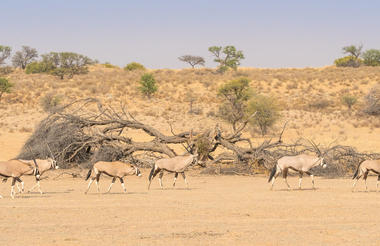
As previously described
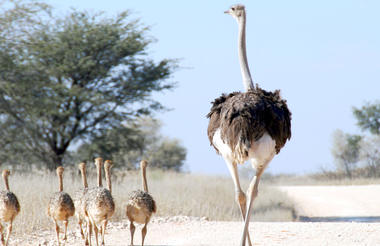

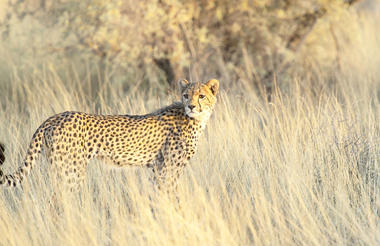
Encompassing the Gemsbok National Park and later forming part of the Kgalagadi Transfrontier Park, the Mabuasehube Game Reserve is set in the scenic southern region of Botswana. This remote and wonderfully wild reserve is a 4x4 self-drive trail mecca, where adventurers can tackle the sandy Mabuasehube Wilderness Trail, the Kaa Trail and the Polentswa Trail, which travels through vast grasslands, pans and gently undulating dunes. Visitors can enjoy camping in the pristine, untouched wilderness after a day of negotiating the roads less travelled, experiencing close encounters with lions creeping through your campsite at sunrise and spotting abundant wildlife dotting the landscape in the wake of the rains. Look forward to languid evenings next to warm fires and view spectacular starry skies in the magnificent Mabuasehube Game Reserve.



Situated 300 kilometres southwest of Maun and just north of the Trans-Kalahari highway, which runs from Lobatse in Botswana to Walvis Bay in Namibia, the small town of Ghanzi is sometimes referred to as the 'Capital of the Kalahari'. It serves as the administrative centre of the Ghanzi district which covers a vast area of cattle ranches and farmland in the west of Botswana. The Ghanzi area has a number of lodges that focus on cultural tourism as well as wildlife viewing - here you can experience the fascinating world of the San Bushmen as they explain to you how they forage, hunt and find water in this harsh environment.


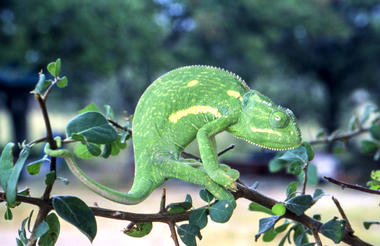
The Hainaveld and Ghanzi Farms surround the northwestern border of the Central Kalahari Game Reserve in Botswana and serve primarily as game viewing areas. Aside from excellent wildlife-spotting opportunities, this safari area is known for its great accessibility, cultural tourism and first-class bird watching. The Hainaveld and Ghanzi Farms offer the quintessential, authentic African bush experience featuring remarkable desert landscapes inhabited by a wide range of desert-adapted wildlife, including gemsbok, springbok, giraffes, ostriches, to name a few. It is also home to a blend of cultures, including the Bakgalagadi, the original inhabitants, the Herero, the San, the Batawana, and the Afrikaners. Visitors can explore local villages, learn about the ancient traditional way of life of the Kalahari hunter-gatherers, take a nature walk with an expert guide, relax at a luxury lodge or spend a day on safari spotting abundant wildlife. Don’t miss the opportunity to catch a glimpse of the rare black-maned Kalahari lions.



Adventurous travellers seeking a truly remote African safari will be thrilled to discover it in central Botswana. The Central Kalahari Game Reserve is the second largest game reserve in the world and one of the least visited, nothing can prepare you for the sheer wonder of exploring this vast reserve with its wild, untouched beauty. The landscape is dominated by sand veld, acacias, and Kalahari apple-leaf, interspersed with grasslands and dotted with occasional sand dunes, pans and fossil river valleys. While the reserve is home to an impressive variety of wildlife, there is one animal that is rather obviously absent, the human being. It is this lack of human traffic, combined with the park’s lack of infrastructure, that makes for a challenging and marvellously authentic African experience. Visitors need to be entirely self-sufficient but those willing to make the effort will be richly rewarded.



As previously described

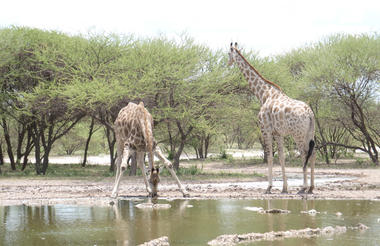

As previously described
As previously described
North-eastern Botwana’s Boteti River, within the Makgadikgadi Pans National Park, lies on the grounds of an ancient lake, within a region where some of the first ‘homo sapiens’ (humans) lived. This area is an essential part of the massive annual migration - visitors can look forward to seeing enormous herds of oryx, wildebeests, impalas, zebras, and springbok as well as elephants and hippopotamuses along the riverbank. The river also provides prime bird-watching opportunities, with large flocks of flamingos and numerous other species calling it home. Besides the usual nature reserve activities, try taking a small chartered plane for the best views of the herds; go quad biking across salt flats and sleep there under the stars, or take a cultural tour to see ancient tribal sites.

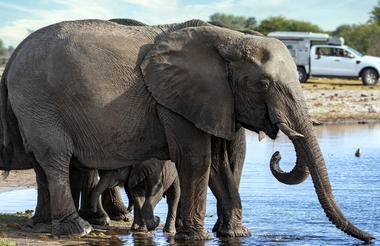
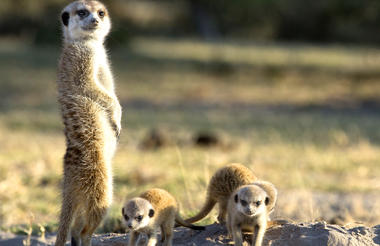
Adjoining the Makgadikgadi Pans National Park on its northern border, the Nxai Pans were once salt lakes. Today, the Nxai Pan National Park preserves this precious area, which is rich in biodiversity and is now characterised by grasslands dotted with trees and small pans that fill in the rainy season. The striking, famous Baines Baobabs, first drawn by the renowned explorer in the 1860s are a must-see, and there are several activities to look forward to. Take a 4WD sunset or sunrise game drive, or a birdwatching tour. The Nxai Pan is a breeding ground for wildebeest, gemsbok, zebra, and eland, and an impressive list of other animals can be seen quite easily too including lions, ostriches, giraffes, cheetahs, jackals, bat-eared fox, and even the elusive nocturnal porcupine.
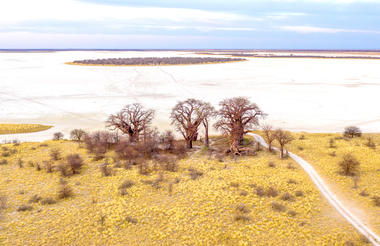
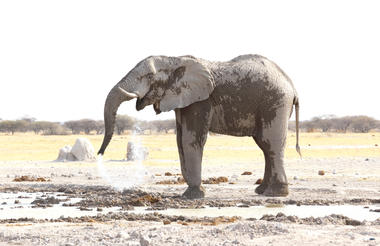
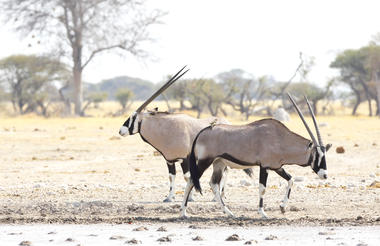
Set in the heart of the dry savanna of northeastern Botswana, the Makgadikgadi Pan is the world's largest network of salt pans stretching over 3900 square kilometres and formed on the bed of the ancient Makgadikgadi Lake that began evaporating aeons ago. Visiting Makgadikgadi is a unique salt desert experience: in the dry season, this vast expanse of sun-baked salt glistens in the light, and when the rains come, the pan is home to a cornucopia of flamingos and other waterbirds, as well as one of Africa's largest zebra populations, whose annual migration is a wonder to behold. Visitors can immerse themselves in the stark beauty of this incredible landscape, spot a host of wildlife and enjoy a number of activities, including horse riding safaris, game drives, and excellent birdwatching. Other highlights include: quad biking across the vast expanse of dry salt pans or jumping in a helicopter and viewing countless flamingo flocks creating a magnificent pink spectacle dotting the landscape.
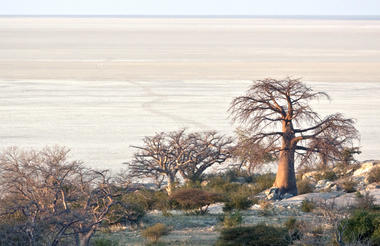
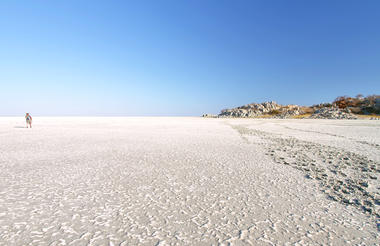
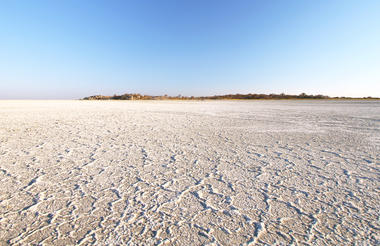
As previously described
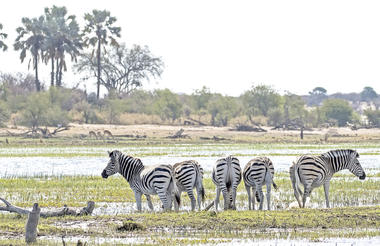

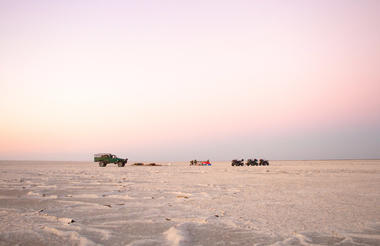
As previously described
Idyllically located in the spectacular Matobo Hills, the renowned Matobo National Park is known for its rich human history, its remarkably diverse flora and fauna and its magnificent rugged terrain. This unspoiled natural wilderness features a range of massive red-tinged, granite boulders interspersed with gorgeous wooded valleys making it a dream destination for hikers, climbers and nature lovers alike. The reserve is compact, easily accessible and is home to an impressive range of African wildlife including the highly endangered black and white rhinoceros, zebra, wildebeest, giraffe, cheetah, hippo, warthog and crocodile as well as Africa's largest concentration of leopard and black eagles. This unforgettable national park serves as an ideal stopover for travellers heading to the popular tourist sites of Hwange and the majestic Victoria Falls.
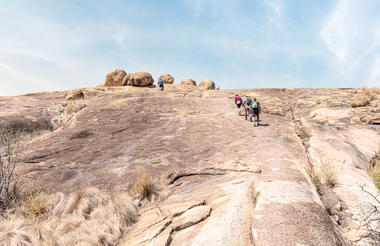
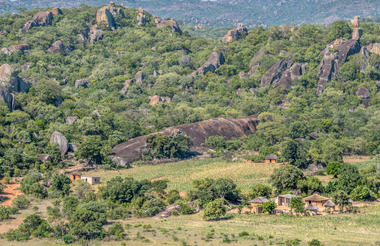
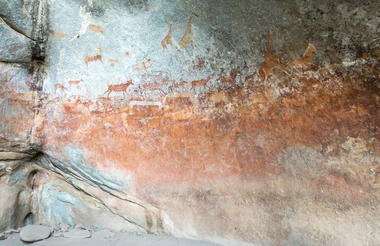
Situated in western Zimbabwe, the Hwange National Park is the country's biggest reserve, home to a profusion of wildlife, including giraffe, lion, zebra and approximately 40 000 elephants. It provides a sanctuary for all the country’s endangered species, including a population of wild dogs thought to be among the most sizeable surviving groups on the continent. The park’s magnificent terrain ranges from desert dunes, savannah lands and mopane woodlands to rocky outcrops and sparse forests. Visitors can look forward to game drives, guided walks or horse riding safaris. Other highlights include: the Bumbusi National Monument and the Nyamandhlovu Pan.
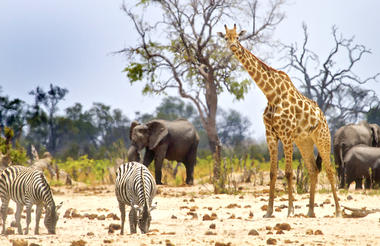
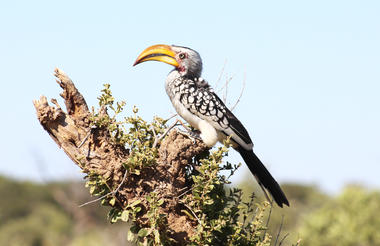
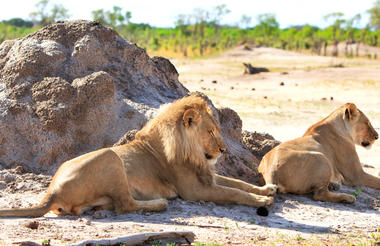
Located in western Zimbabwe, Hwange National Park (formerly Wankie Game Reserve) is the largest natural reserve in the country and is famous for its rich diversity of wildlife. The northern and western areas of the park are different - the northern area is encompassed by the Zambezi watershed, while the western part consists of grasslands, marshes, and scattered woodlands. The natural seeps such as Nehimba and Shakwanki, where animals dig for water, are particularly notable. The park is home to one of the biggest elephant populations in the world, as well as around 100 mammal species, and several protected animals including the endangered wild dog, critically endangered black rhino, and rare roan and sable. Around 500 bird species also inhabit the area. Visitors can look forward to bush hikes, game drives, and horse riding safaris.



Victoria Falls is one of the world’s most impressive waterfalls. It is set on the magnificent Zambezi River which creates the border between Zambia and Zimbabwe. These spectacular falls can be easily visited and viewed from the Zimbabwean side. Considered to be the world’s widest waterfalls, Victoria Falls measures an impressive 1708 metres in width. The small town of Victoria Falls, which lies adjacent to the waterfalls, serves as a great base from which to explore the many attractions this area of Zimbabwe has to offer. The surrounding area provides a wide range of adrenalin-filled activities for adventure lovers. Visitors can look forward to an array of wonderful activities including: scenic flights, micro lighting, white water rafting, bungee jumping, kayaking, and once-in-a-lifetime expeditions into the incredible Chobe National Park.
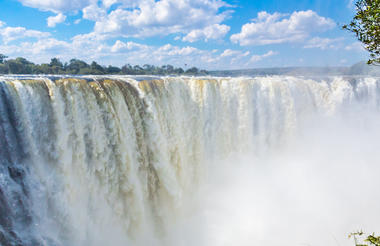
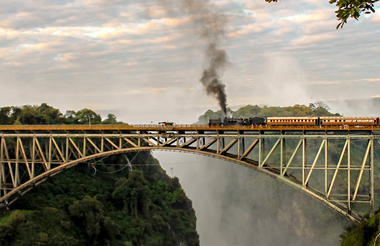
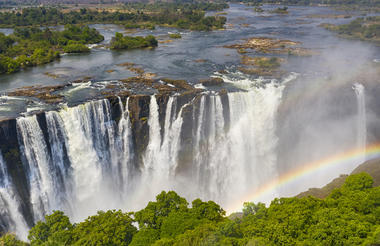
Zambia’s flourishing border town, Livingstone, or Maramba, is situated in the South Province of the country. The British colonial city is a tourism centre for the nearby Victoria Falls, Mosi-oa-Tunya National Park, and the Zambezi River. Continuously growing, this romantic destination is rich in culture and history, with a host of adrenaline-infused experiences to choose from including bungee jumping, abseiling, gorge swinging, white water rafting, kayaking, canoeing, and jet boating. For visitors seeking a more relaxed experience, there are countless other activities on offer too. Visit the fascinating Livingstone Museum, take a helicopter flight over the roaring fall, or experience a superb game drive in the UNESCO-listed Mosi-oa-Tunya National Park, home to African elephants, hippopotamus, and an impressive variety of bird species.
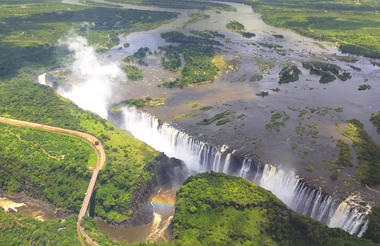
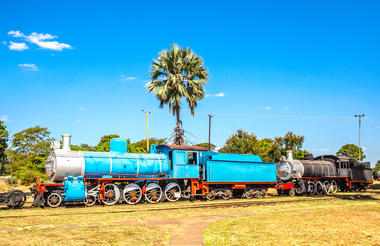
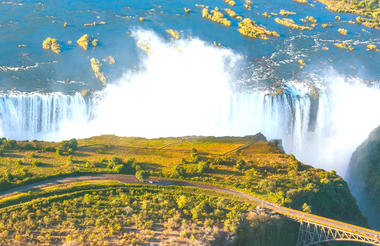
The name ‘Chirundu’ roughly translates to 'people following one another in a queue' which hints at this settlement’s primary function as a major border crossing over the Zambezi river between Zimbabwe and Zambia. Wild animals, including elephants, are frequently spotted wandering around the town, apparently unconcerned by the presence of people. Tourists typically make use of Chirundu as a gateway to the nearby Chirundu Petrified Forest and the area’s numerous game reserves including the world-renowned Mana Pools National Park. However, those who linger will find excellent sport fishing opportunities and several fishing camps which welcome visitors and offer boats for hire. On the Zambian side of the river is a slightly smaller town also called Chirundu.
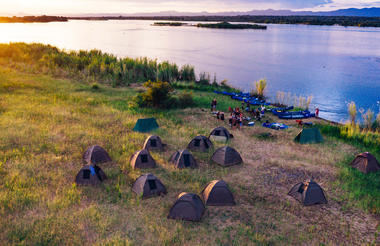


Located on the Zimbabwean border in the southern reaches of Zambia, the Lower Zambezi region is best known as the home to the Lower Zambezi National Park which features exceptional, undeveloped wildlife areas. It is renowned for its abundant game - hippos, buffalo, crocodiles, fish eagles, and herds of elephants can be spotted, among other species. The landscape is characterised by rugged, unspoilt wilderness of vast floodplains, scattered with indigenous woodlands. Visitors can look forward to an array of wonderful activities along the Zambezi including game drives, walking safaris, canoe trips, and excellent tiger fishing.
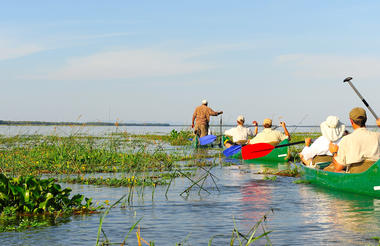
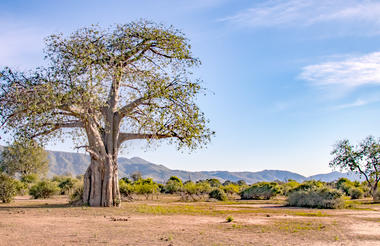
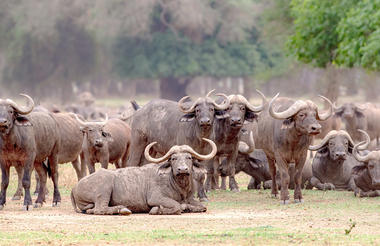
Lusaka, Zambia’s cosmopolitan capital, is a typical modern African city. Set on open plains at the heart of the country, northeast of the capital, the city serves as Zambia’s rapidly developing economic and transport hub with new buildings popping up everywhere and many chain stores and shopping malls springing up all over the sprawling suburbs. Lusaka’s wide, tree-lined boulevards feature a range of tourist facilities including hotels, guest houses, coffee shops, fast food outlets, nightclubs, and pubs. Visitor attractions include the Henry Tayali Gallery, showcasing local artworks; The National Museum, covering Zambia's colonial history; the Lilayi Elephant Orphanage; and a number of colourful markets. Don’t miss the popular Munda Wanga Environmental Park where you will find a Wildlife Park and Sanctuary, Botanical Gardens, Recreational Village, and an Environmental Education Centre.
